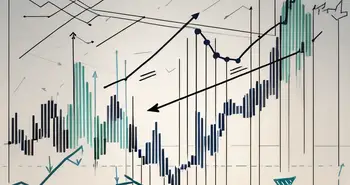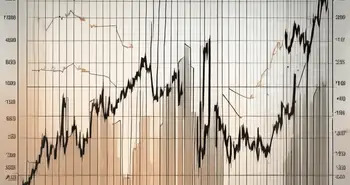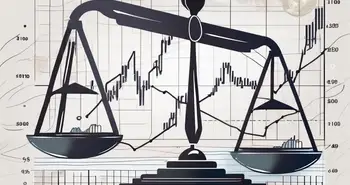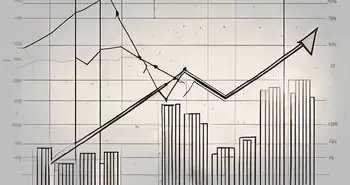Choppy Market: Strategies for Surviving Unpredictable Trading Conditions

Navigating a volatile financial environment can be a daunting challenge for traders and investors alike. In my experience, understanding the fundamental characteristics of a choppy market can make all the difference in maintaining a steady course. Let's delve into the intricacies of this phenomenon and explore effective strategies for weathering its storms.
Understanding the Nature of a Choppy Market
Defining a Choppy Market
A choppy market, often referred to as a sideways market, is characterized by frequent price fluctuations that lack a clear upward or downward trend. In these environments, assets can swing dramatically in both directions, creating an unpredictable atmosphere. Traders who are not prepared may find themselves at the mercy of sudden price changes.
During my early years in trading, I faced the struggles of navigating such markets firsthand. I recall a time when I was caught in a continuous series of up and down cycles, leading to frustration and losses. That experience taught me the importance of thorough market analysis and developing a strategic approach.
The Causes and Effects of Market Volatility
Market volatility can stem from a variety of factors, including economic indicators, geopolitical events, and changes in market sentiment. Key economic reports, such as employment data or inflation rates, can trigger sharp reactions. Additionally, unexpected global events, like political unrest or natural disasters, can sow seeds of uncertainty, leading to further volatility.
The effects of a choppy market are often felt by traders in their portfolios. Erratic price movements can lead to emotional trading decisions, pushing individuals to buy high and sell low—ultimately resulting in losses. Recognizing these patterns in market behavior can help traders remain level-headed; a crucial skill in this arena.
Essential Tools for Navigating a Choppy Market
Technical Analysis: Your Navigation Chart
Technical analysis serves as a valuable tool when navigating choppy waters. By utilizing various indicators and chart patterns, traders can identify potential entry and exit points. Moving averages, support and resistance levels, and momentum indicators help to decipher market behavior, providing insights into future price movements.
I often employ technical analysis to delineate significant price levels that guide my trading decisions. On several occasions, I had positioned trades based on patterns that emerged during choppy conditions, enabling me to capitalize on brief market surges or dips.
The Role of Fundamental Analysis
While technical analysis focuses on price action, fundamental analysis takes a broader view by examining the underlying economic factors driving market movements. Understanding a company’s earnings reports, macroeconomic trends, and industry dynamics can provide additional context when interpreting price fluctuations.
In my experience, combining both technical and fundamental analysis has proven to be effective in sustaining profits within choppy markets. It allows for informed decision-making and the ability to anticipate potential reversals before they happen.
Risk Management in a Volatile Market
The Importance of a Well-Defined Trading Plan
Without a solid trading plan, the unpredictable nature of a choppy market can easily lead to impulsive decisions. A well-defined trading strategy should outline specific entry and exit criteria, risk tolerance, and position sizing to minimize losses.
In my practice, I always ensure my trading plan includes strict risk management guidelines. For instance, I set stop-loss orders to guard against excessive losses, which has shielded me during turbulent times when markets turn unexpectedly.
Diversification as a Risk Management Strategy
Diversifying your portfolio is another effective strategy when dealing with volatile markets. By spreading investments across various asset classes, sectors, or geographies, traders can mitigate risk. If one asset performs poorly, others in the portfolio may balance it out.
I often recommend diversification to individuals seeking stability within their investments. Balancing high-risk trades with steady performers can help weather the uncertainties presented by choppy conditions.
Strategies for Success in a Choppy Market
Timing the Market: Is it Possible?
Many traders often ponder whether timing the market is a feasible strategy. While there are certainly instances where timing may yield temporary gains, relying on it exclusively can be a recipe for disaster. In essence, sticking to a comprehensive plan that includes a mix of analysis and risk management is more pragmatic than trying to predict market swings.
Personally, I have found the greatest success not in timing the perfect entry, but rather in recognizing the broader trends and being patient with my trades—even during tumultuous periods. Holding onto well-researched positions has often paid off over time.
The Power of Patience and Discipline
Patience and discipline are essential virtues when trading in a choppy market. The temptation to react to short-term fluctuations can sabotage long-term strategies. Sticking to your trading plan and allowing positions to develop is vital.
I recall times when my patience was tested, particularly when I had to endure prolonged periods of uncertainty. Exercise in discipline during those times not only preserved my capital but ultimately led to gains as the market stabilized. Trusting your analysis is crucial.
Psychological Aspects of Trading in a Choppy Market
Managing Fear and Greed
Emotional aspects play an essential role in trading. Fear and greed can cloud judgment and lead to poor decision-making. A choppy market often heightens these emotions, prompting knee-jerk reactions that may not align with one’s strategic intent.
In my trading career, I’ve experienced the dangers of letting emotions dictate my actions. To combat this, I advocate for practices such as journaling posts and reflecting on them to identify emotional triggers; doing so has greatly improved my trading mindset.
The Importance of Emotional Resilience
Emotional resilience allows traders to remain steadfast in the face of market turmoil. By cultivating a strong mental framework, you can bounce back from losses and maintain focus on long-term objectives.
Building emotional resilience is a journey. Developing practices such as mindfulness or deep-breathing exercises can help alleviate stress during turbulent times, ensuring that I remain composed in my decision-making.
FAQs
- What defines a choppy market?
A choppy market is characterized by frequent price fluctuations without a clear directional trend, creating an unpredictable environment for traders.
- What tools are best for navigating a choppy market?
Both technical and fundamental analysis can provide essential insights. Technical indicators like moving averages and fundamental factors like earnings reports are invaluable.
- Why is risk management crucial in choppy markets?
A solid risk management strategy, including a well-defined trading plan and diversification, helps mitigate potential losses and promotes stability in uncertain conditions.
- How can I manage emotions while trading?
Practicing mindfulness, journaling experiences, and developing emotional resilience through various techniques can help manage fear and greed effectively.
In conclusion, while choppy markets can present formidable challenges, they also offer opportunities for those equipped with the right knowledge and tools. By understanding market dynamics and adopting strategic approaches, traders can thrive amidst uncertainty.
Ready to put these strategies to the test in a choppy market? Morpher is the ideal platform to navigate the unpredictable waters of investing. With zero fees, infinite liquidity, and the ability to trade across a multitude of asset classes, Morpher empowers you to trade with confidence and control. Whether you're looking to invest fractionally, short sell without interest fees, or leverage your trades up to 10x, Morpher's revolutionary blockchain technology is designed to democratize trading for all. Experience a unique trading environment with Virtual Futures and take charge of your investments with the Morpher Wallet. Sign Up and Get Your Free Sign Up Bonus today to start trading on a platform that's as dynamic as the markets themselves.

Disclaimer: All investments involve risk, and the past performance of a security, industry, sector, market, financial product, trading strategy, or individual’s trading does not guarantee future results or returns. Investors are fully responsible for any investment decisions they make. Such decisions should be based solely on an evaluation of their financial circumstances, investment objectives, risk tolerance, and liquidity needs. This post does not constitute investment advice.

Painless trading for everyone
Hundreds of markets all in one place - Apple, Bitcoin, Gold, Watches, NFTs, Sneakers and so much more.

Painless trading for everyone
Hundreds of markets all in one place - Apple, Bitcoin, Gold, Watches, NFTs, Sneakers and so much more.









